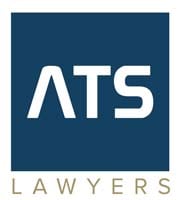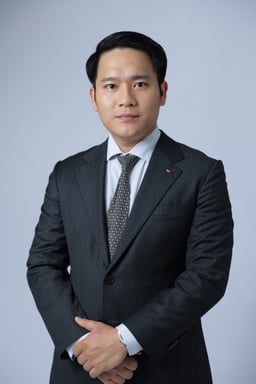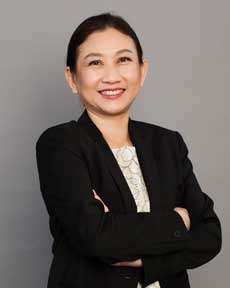Expiry of Land-Use Projects with a Term of 50 Years or Less?
With more than 35 years of foreign investments in Vietnam, various land-use projects, particularly those with less than 50-year term, are approaching expiry. With the new land law and investment law, it is crucial for the investors to understand the regulations on the adjustment/extension of the project operation duration and proactively manage and plan for adjustment/extension application process or even to liquidate the project.
Operation duration of investment projects using land
According to law, (i) the operation duration of an investment project in an economic zone must not exceed 70 years and (ii) the operation duration of an investment project outside an economic zone must not exceed 50 years, unless such investment project is located in a geographical area meeting with difficult socio-economic conditions or in a geographical area meeting extremely difficult socio-economic conditions or has a large investment capital amount but capital recovery is slow, the operation duration may be longer, but must not exceed 70 years.
Both the Law on Investment 2020 and the Land Law 2024 unify the provisions on limitation of the project’s operation duration/land-use term for a project using land. In principle, the land-use term of a project using land will be determined based on the project’s operation term of such project.
Amendments to the operation duration of land-use projects with less than 50-year term
Legally speaking, an investor of a project using land is vested with the rights to adjust or extend the project’s operation duration, provided that the limitation of the project’s operation duration/land-use term for a project using land is ensured.
Adjust the operation duration
According to Article 27.2 of Decree 31/2021/ND-CP, an investor may apply to the authority for adjusting (whether increasing or reducing) its project term at any time during the term. Based on the objectives, size, location, and operation requirements of the investment project, an authority competent to approve investment policy and investment registration authority shall consider and decide whether to adjust the operation duration of the project or not. After approval is issued, the investor will apply to the land authority for a corresponding adjustment of the land-use term.
Extend the operation duration
Article 44.4 of the Law on Investment 2020 provides that: “Upon the expiration of an investment project’s operation duration, if the investor wishes to continue implementing the investment project and satisfies conditions as specified by laws, the project’s operation duration may be considered for extension, but must not exceed the maximum duration specified in Article 44.1 or 44.2 of the Law on Investment, except:
(a) Investment projects using outdated technologies, potentially causing environmental pollution or being resource-intensive;
(b) Investment projects in the cases where the investors are required to transfer assets to the Vietnamese State or Vietnamese partner without compensation.”
The phase “Upon the expiration of an investment project’s operation duration” in Article 44.4 of the Law on Investment 2020 may be interpreted that the extension right is likely vested to an investor having an investment project whose operation duration are nearing expiration. On the other hand, Article 55.3 of Decree 31/2021/ND-CP provides that: “For a land-using investment project, the investor shall carry out procedures for extension of operation duration of the investment project according to Article 55.2 at least 06 months before the expiration of the project’s operation duration.” This provision only sets out the minimum time limit for extension procedures but there is no explicit time limitation when the investor may apply for extension procedures. On a practical note, the timeline for obtaining approval for project operation duration extension may be very time-consuming, and the investor must obtain such approval before the deadline of submission of application dossier for extension of land-use term. Specifically, Article 172.3 of the Land Law 2024 provides that: “The extension of land use term shall be carried out in the last year of the term…land users wishing to extend the land use term shall submit dossiers of request for extension of land use term at least 6 months before the land use term expires”. Based on the above, it appears that the investor may apply for an extension of the project's operational duration approximately 2 to 3 years before its expiry, without needing to wait until the project is close to expiration. For example, Mercedes-Benz Vietnam Co., Ltd. (MBV) has implemented Mercedes-Benz Automobile Assembly Plant Project since 1995 and the project completion date is on 14 April 2025. In September 2021 (around 03 years before the expiry date of the project’s operation duration), MBV initiated the extension process. It was only in late 2024 that the Ho Chi Minh City People’s Committee approved a 5-year extension to the project's operational duration, along with a corresponding extension of the land use term, subject to annual rental payments.
Payment of land use levy and land rental upon extension of land use term and adjustment of land use term
Article 156.2 of the Land Law 2024, after land-use term is extended or adjusted, if land users are liable to land use levy or land rental, they shall pay land-use levy or land rental for the extended or adjusted land use term. As further detailed in Article 35 of Decree 103/2024/ND-CP on land use levy and land rental, it appears that the land payment method (i.e. whether annual payment or one-off payment) for the extended or adjusted land-use term will follow the previous land payment method before extension or adjustment.
Legal procedures for adjusting or extending the project’s operation duration
Provisions on legal procedures, process, and application dossier for adjusting or extending the project’s operation duration are further provided in Article 55 of Decree 31/2021/ND-CP. Generally speaking, the adjustment procedure/dossier is likely similar to the normal procedure for amendment of contents of an existing investment project, while the extension procedure/dossier is likely similar to applying for a new investment project. Even though the licensing result is the same (i.e. the project’s operation duration after adjustment or extension is 50 years), it appears that the extension application dossier is more complicated than the adjustment dossier. For instance, when applying for extension, the investor must carry out a procedure to certify that its project does not use outdated technologies, potentially causing environmental pollution or being resource-intensive under Decision 29/2023/QD-TTg. This difference may be important to the investors of production projects when the relevant projects may have potential impacts to the environment or resources and such investors should be aware of those issues and choose the suitable method when amending the project’s operation duration.
Possible options for land-use projects having 50 years’ operation duration
Taking into consideration of Article 44 of the Law on Investment 2020, it appears that:
(a) For a project using land already having 50 years’ operation duration and located in an economic zone or located outside the economic zone but in a geographical area meeting with difficult socio-economic conditions or in a geographical area meeting extremely difficult socio-economic conditions or an investment project which has a large investment capital amount but capital recovery is slow: the investor of such investment project may apply for extension of project’s operation duration but must not exceed 70 years;
(b) For a project using land having 50 years’ operation duration and not subject to any case specified in point (a) above or a project using land already having 70 years’ operation duration, the investors of those investment projects are not permitted to apply for extension of project’s operation duration because the maximum operation duration is 50 years or 70 years respectively.
Consequently, the investor(s) will have to terminate the expired investment projects and carry out the procedures for liquidation of investment projects under regulations on investment. A question may be raised as to whether or not the investor may use its currently operating assets to apply for a new investment project at the same project location. The answer is likely positive but the question remains whether this investor is given any preferential right as the existing land user or not in case there are other (new) investors interested is unclear. It is expected that there will be further guidance from the competent authority in this regard.
Authored by Bui Ngoc Anh and Pham Thanh Tung
VILAF - July 2 2025

















